Panasonic HC-VX1
Rated 4.25 out of 5 based on 4 customer ratings
$387.99
Capture the moments that matter with the Panasonic HC-VX1 camcorder, offering 4K video, high-quality audio, and a host of features for stunning video creation.
Description
The Panasonic HC-VX1 Camcorder is an excellent device for those who are looking to capture precious moments in high-quality videos. There are a lot of features and specifications that make this camcorder stand out in the market, and we will go through each of those in detail.
The first thing to note about the Panasonic HC-VX1 Camcorder is its 4K resolution capability. With this kind of resolution, you can be sure that the videos you take will be crystal clear, and you will be able to see every detail with utmost clarity. It has a 1/2.5-inch sensor that captures high-quality images with its 8.29-megapixel effective resolution.
Another feature that makes the Panasonic HC-VX1 Camcorder stand out is its HDR movie mode. This feature enhances the dynamic range of your videos, which means that you will have better contrast between dark and light parts of the frame. It gives your videos a more realistic look as it captures images in natural lighting with accurate colors.
Furthermore, the Panasonic HC-VX1 Camcorder has a 24x optical zoom that allows you to zoom in and out of objects without losing the quality of the video. It also has a 25mm wide-angle lens that gives you a wider view of the scene, which is particularly useful when you are capturing panoramic landscapes or group shots with multiple subjects.
The Panasonic HC-VX1 Camcorder is designed for comfortable handling. It has a 3-inch touch screen that allows you to control the device through intuitive finger operations. It also has a high-speed autofocus that eliminates the need for manual focusing, especially when you are in a rush to capture those perfect moments.
Another standout feature of the Panasonic HC-VX1 Camcorder is the wireless connectivity. You can easily pair it with your smartphone or tablet through a Wi-Fi connection and control it remotely. This feature is particularly useful when you want to take group selfies or capture video in tight spaces where it is difficult to access the camcorder’s controls.
In conclusion, the Panasonic HC-VX1 Camcorder is an excellent device that offers high-quality video resolution, enhanced image dynamics, and comfortable handling. Its wireless connectivity further adds to its convenience and ease of use. This camcorder is a great choice for anyone who is looking to capture precious moments with utmost detail and clarity.
2160p (4K) Wi-Fi
Panasonic HC-VX1 properties
| Product name |
HC-VX1 |
| Max Video Resolution |
2160p (4K) |
| Recordable Files |
MP4, MPEG-4, AVC/H.264 |
| Type |
Action camera |
| HDMI |
Yes |
| Wi-Fi |
Yes |
| USB 2.0 |
Yes |
| Flash memory |
Yes |
| SD |
Yes |
| SDHC |
Yes |
| SDXC |
Yes |
| Digital Zoom |
70 x |
| Optical Zoom |
24 x |
| Filter Size |
62.0 mm |
| Height |
77.0 mm |
| Width |
68.0 mm |
| Depth |
142.0 mm |
| Weight |
428 g |
Frequently Asked Questions:
What are the basic steps to connect my Panasonic HC-VX1 camcorder to my computer for video transfer?
To connect your Panasonic HC-VX1 camcorder to your computer, follow these simple steps:
1. Gather necessary cables: You need a USB cable that came with your HC-VX1 or you can buy an original Panasonic USB cable from the company's website or an authorized retailer. This cable has a standard USB Type A connector on one end and a proprietary connector (Type I) on the other end which fits into the camcorder.
2. Connect the camcorder to your computer: Plug the proprietary connector of the USB cable into the HC-VX1's USB port located at the bottom of the camcorder. The USB port is a small round or square opening that may be hidden by a rubber cover which you can slide away before plugging in the cable.
3. Power on your camcorder: Turn on the power switch, usually located on the top right side of the camcorder, to ensure it's switched on and connected with your computer.
4. Install Panasonic's software suite (PFS): If you haven't already, download and install PFS (Panasonic's File Studio) from Panasonic’s website or a trusted source. This software is necessary for managing files on your camcorder as well as transferring video files to your computer.
5. Launch the PFS software: Once installed, open the PFS program on your computer. The software will automatically detect your connected HC-VX1 and display it under the "Devices" tab in the main window.
6. Transfer videos from camcorder to computer: Click on the device name (e.g., HC-VX1) in the PFS interface, then navigate to the folder containing your desired video clips. Select these files and click 'Copy' or 'Move' depending on whether you want to keep them on the camera or move them to your computer respectively.
7. Complete the transfer process: Wait for the file(s) to be successfully copied or moved from the camcorder to your computer. The duration of this step depends on the size and number of files being transferred.
8. Safely eject your camcorder: Once all videos have been transferred, safely eject your HC-VX1 by right-clicking on its device icon in the PFS software and selecting "Eject" or simply unplugging the USB cable from both ends.
Remember to handle your camcorder with care during these steps, especially while connecting and disconnecting cables to prevent any damage to your valuable equipment.
How do I connect my Panasonic HC-VX1 camcorder to WiFi for remote monitoring and controlling via the Panasonic Image App?
Here's how you can connect your Panasonic HC-VX1 camcorder to WiFi for remote monitoring and controlling via the Panasonic Image App:
1. Ensure that your camcorder is connected to a power source, as the WiFi connection will drain its battery quickly. Press the "Menu" button on the camcorder's control panel. Scroll down and select the "Network Setup" option using the navigation buttons or the joystick control. Select the "Wi-Fi Settings" option. Choose your preferred Wi-Fi network from the list of available networks by selecting it with the joystick control and pressing the "OK" button. Enter the password for the selected network using the on-screen keypad, then press the "OK" button. Wait for the camcorder to connect to the Wi-Fi network. This may take a few seconds or minutes depending on the signal strength and network traffic. Once connected, you can download the Panasonic Image App from the App Store or Google Play Store onto your smartphone or tablet. Launch the app and sign in with your Panasonic account (or create a new one if you don't have one). Select your camcorder from the list of available devices, then tap "Connect" to establish a connection between the device and the app. You can now remotely monitor and control your camcorder through the app, including adjusting settings, previewing live video feeds, and recording footage.
How do I connect my Panasonic HC-VX1 camcorder to Wi-Fi and stream live video using the built-in app?
To connect your Panasonic HC-VX1 camcorder to Wi-Fi and stream live video using the built-in app, follow these steps:
1. Make sure that your camcorder's firmware is updated to the latest version. You can check this by going to the Setup menu, selecting Network Settings, and then choosing Check for Updates. If an update is available, select Download and Install Update. Turn on your camcorder and make sure it's in Wi-Fi mode. You can do this by pressing the Wi-Fi button on the side of the camera until the Wi-Fi icon appears in the viewfinder. Connect your smartphone or tablet to the same Wi-Fi network as your camcorder. Make sure your device is running iOS 8. Android 4. Download the Panasonic Image App from the App Store (iOS) or Google Play (Android). Open the app and tap the Wi-Fi icon in the top left corner. Your camcorder should appear in the list of available devices. Tap it to connect. When prompted, enter the password for your Wi-Fi network. This is the same password you use to connect your device to the network. Once connected, you can select Live View from the app's main menu. This will stream live video from your camcorder to your device. To stop streaming and disconnect from Wi-Fi, go to the app's Settings menu and select Disconnect. Note: The Panasonic Image App also allows you to transfer photos and videos between your camcorder and device, as well as control certain camera settings remotely.
How do I properly use the slow motion feature on my Panasonic HC-VX1 camcorder?
To utilize the slow motion feature on your Panasonic HC-VX1 camcorder, follow these steps:
1. Ensure that your camera is set to video mode and make sure the lens cap is removed. Press the "HOME" button located on the rear of the camera to display the menu screen. Select the "SET UP" option using the navigation pad or touchscreen interface. Scroll down to "Motion Picture Settings" and select it. From the new menu, choose "Frame Rate" and adjust it according to your desired slow motion speed. The lower the frame rate, the slower the action will appear in your footage. Exit out of the settings menu by pressing the "MENU/SET" button on the rear of the camera. Begin recording as usual, and the video you capture will be recorded at the selected slow motion speed. Once you've finished capturing footage in slow motion, press the "STOP RECORDING" button to save your video to the camera's memory card or an external storage device. Remember that using slow motion can greatly impact the overall look and feel of your footage, so be sure to use it sparingly and intentionally to achieve the desired effect.
The video recorded in low light conditions appears shaky. Is there an option to adjust the image stabilization settings for such situations?
Yes, it is possible to adjust the image stabilization settings to improve the video quality in low-light conditions. However, this may depend on the camera model and software used. Typically, cameras have a setting called "Optical Image Stabilization" (OIS) or "Digital Image Stabilization" (DIS). OIS uses lens movements to counteract camera shake, while DIS uses digital signal processing to smooth out the image. If you're using a smartphone or a basic camcorder, you may not have access to advanced settings like OIS or DIS. However, some cameras allow you to adjust the sensitivity of the stabilization algorithm, which can help in low-light conditions. To adjust these settings, you would typically go into the camera's settings menu and look for options related to image stabilization. From there, you can try adjusting the sensitivity or enabling/disabling OIS/DIS depending on your specific situation. It's worth noting that while adjusting image stabilization settings may help improve video quality in low-light conditions, it's not a substitute for proper lighting. If possible, try to use additional light sources or find a location with better lighting to get the best results.
Before you buy Panasonic HC-VX1
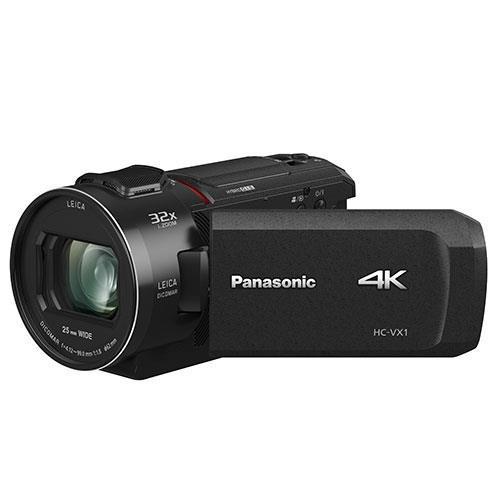


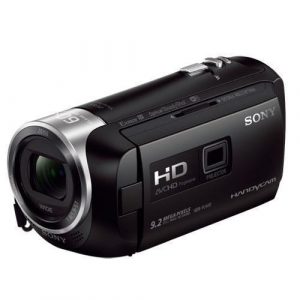
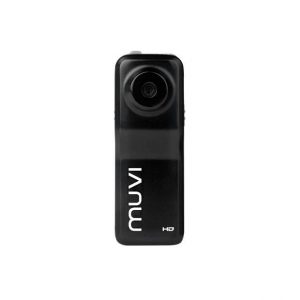
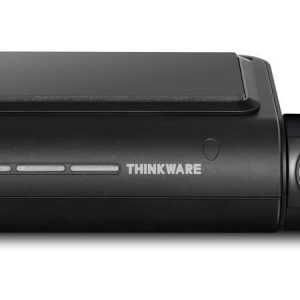
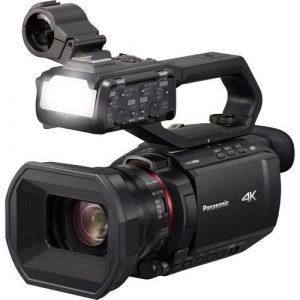
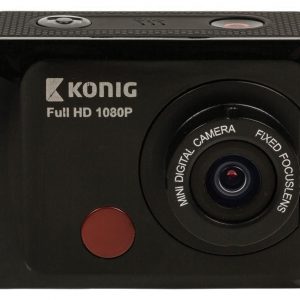
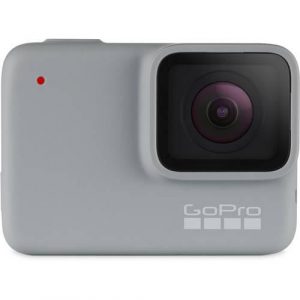
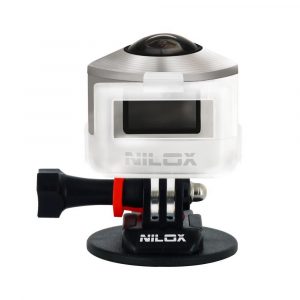
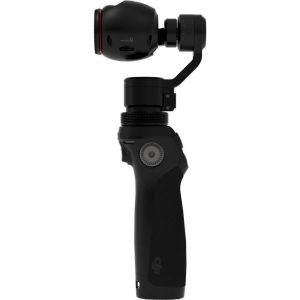
BB –
Great value for money. I only use it for a few days. So far, all the pros.
taplic –
I used to have old Sony HDR CX330 – this is a far better model 4K – not necessary for me – but FHD is awesome. Much birther and less noise than old HDR.
Lucy Luu –
Comfortable to use, programmable buttons, the sound quality is quite sufficient for me. If necessary, an external VideoMic Pro can be attached, it works great.
The problem is that the size of the matrix is much smaller than in the DSLR and let’s face it – the dynamics in low light do not knock you down.
On the other hand, it is not equipment for shooting atmospheric music videos or commercials, but rather for home and reportage use.
The advantage is that the camera does not lose focus and the low-light autofocus software works as it should.
I use it mainly for video production for YouTube and as a camera for filming family and occasional meetings.
I am not a professional filmmaker in terms of profit, apart from YouTube.
Leonardo Castaneda –
I am always on the lookout for top-quality products that can cater to my needs. Recently, I decided to invest in a new camcorder, and after doing thorough research, I settled for the Panasonic HC-VX1. It’s been almost two months since I bought this camera, and I must say, I am thoroughly impressed with its performance.
Firstly, the image quality of the Panasonic HC-VX1 is simply stunning. The camera boasts a 20x optical zoom lens that captures even the tiniest details with clarity and precision. Whether I’m filming indoor or outdoor scenes, the footage looks incredibly sharp and vibrant, thanks to the camera’s advanced image stabilization technology.
Another aspect that sets the Panasonic HC-VX1 apart from its competitors is its versatility. The camera comes with a wide range of shooting modes that cater to different scenarios. Whether I want to capture fast-moving objects, low light scenes, or slow motion footage, this camera has got me covered.
One feature that really caught my attention was the camera’s connectivity options. It comes equipped with USB 2.0, which allows me to transfer footage directly from the camcorder to my computer or other compatible devices. This saves me a lot of time and hassle, as I no longer have to worry about carrying around bulky external hard drives.
When it comes to comparing this camera to other popular models in its category, I would say that the Panasonic HC-VX1 is a clear winner. For instance, compared to Sony’s Handycam FDR-AX53, which has a similar price point, the Panasonic HC-VX1 offers better image quality and a wider range of shooting modes. Similarly, compared to Canon’s LEGRIA HF G20, which is slightly more expensive, I found that the Panasonic HC-VX1 offered better value for money due to its superior connectivity options.
In terms of professional use, the Panasonic HC-VX1 is definitely a camera that can hold its own. While it may not be as advanced as some of the high-end models used by professional videographers, it still offers exceptional image quality and versatility that can cater to a wide range of applications. Whether I’m shooting weddings, corporate events, or documentaries, this camera has everything I need to produce high-quality footage.
Overall, I would highly recommend the Panasonic HC-VX1 to anyone in the market for a new camcorder. Its combination of superior image quality, versatility, and connectivity options make it an outstanding choice for both amateur and professional users alike. Whether you’re looking to capture stunning footage for personal use or for commercial purposes, this camera is definitely worth considering.
In today’s news, there has been a lot of talk about the stock market and its potential upside after 2024. However, as someone who prefers to prepare defensively, I believe that it’s always better to focus on value stocks, small caps, and equal-weighted S&P500 for bargains. By overweighting equities in this way, investors can minimize their risks while still enjoying the potential benefits of a growing market. Whether you’re a seasoned investor or a newcomer to the stock market, these strategies can help you achieve top performance even in turbulent times.